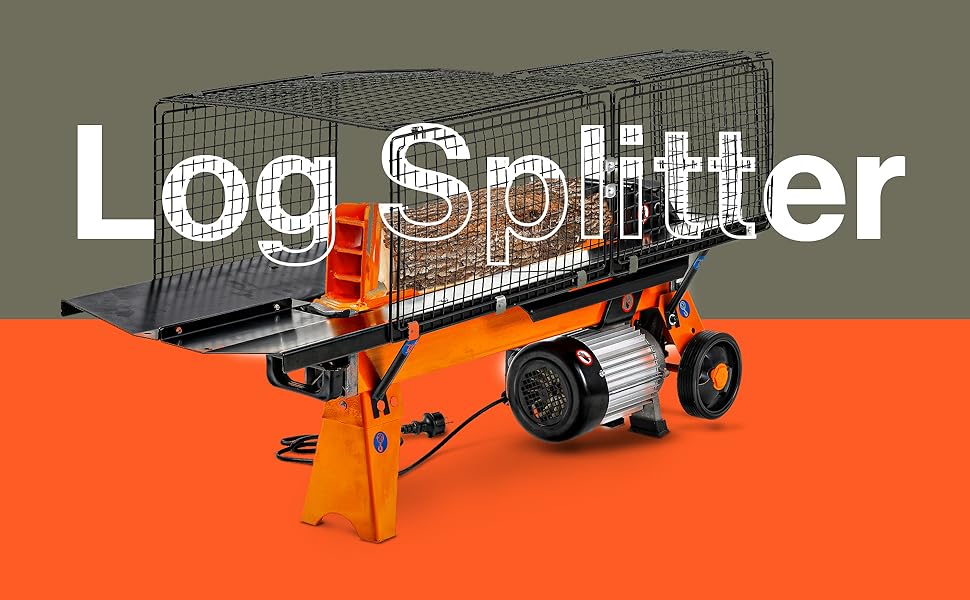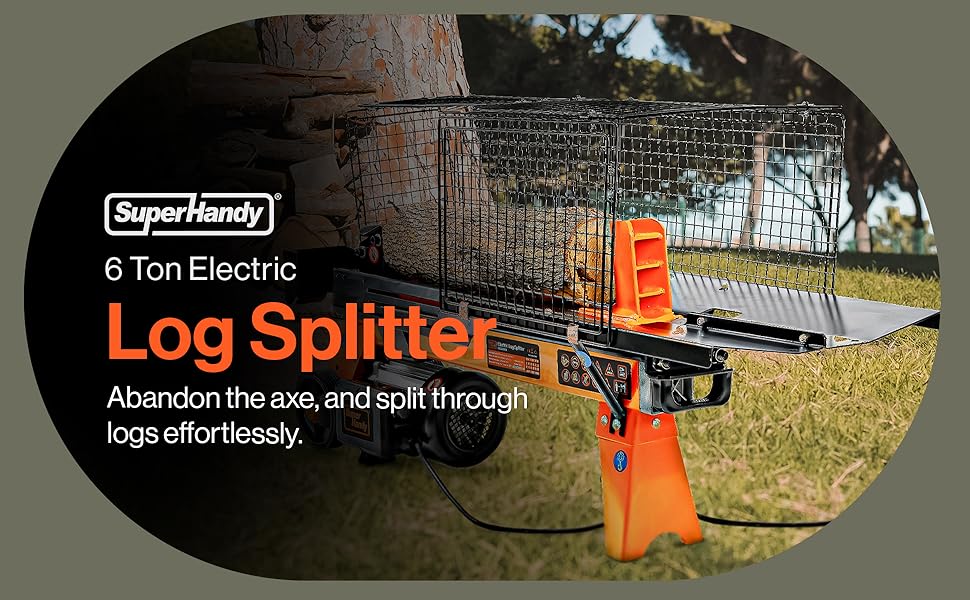Choosing a home-use log splitter means you match its type and power to your wood-splitting needs. Many people make mistakes when buying a log splitter. You might pick one with too little force, ignore log size, or forget about the hardness of wood. Common errors also include using wet wood, neglecting wedge sharpness, or skipping hydraulic checks. Think about safety, how often you split wood, and the benefits of using log splitters. This log splitter buying guide helps you avoid problems when buying a log splitter.
Key Takeaways
-
Choose a log splitter with the right type and power. Think about your wood size and how hard it is. Also, think about how often you split wood. This helps you get good results and stay safe.
-
Look at important features like splitting force and log size capacity. Check for safety controls and if you can move it easily. Pick a splitter that works for your needs and garden.
-
Take care of your log splitter often. Clean it and put oil on the parts. Check the parts to keep it safe and working well for a long time.
Types of Home-use Log Splitters
Manual Log Splitters
A manual log splitter is safe and easy to carry. You do not need electricity or fuel for it. You can use it where there is no power. It works best for logs that are not too big. Most logs should be up to 20 inches long and 12 inches wide. You must use your own strength to split the wood. This means it takes more time and effort. Many manual splitters have comfy handles. They also need two hands to use, which makes them safer. These features help you avoid hurting yourself. If you want a quiet tool and do not like flying wood bits, this is a good choice. Manual log splitters cost less and are easy to move. They are great for careful people who want a simple way to split wood.
Electric Log Splitters
An electric hydraulic log splitter makes splitting logs easier. You just plug it into a normal socket. Most electric splitters, like the SuperHandy Electric Log Splitter, give about 6 tons of force. You can split logs up to 10 inches wide and 20 inches long. Electric splitters are quieter than powered ones. You can use them inside or outside without bothering anyone.
Tip: Always read safety rules and wear safety gear when you use any log splitter.
|
Aspect |
Advantages |
Disadvantages / Considerations |
|---|---|---|
|
Ease of Use |
Needs little effort; just plug in and use |
N/A |
|
Speed |
Splits logs fast and saves you time |
N/A |
|
Safety |
Safer with two-hand use and safety switches |
You must follow safety rules and wear safety gear |
|
Environmental |
No fumes; quieter to use |
Needs electricity; not good for places with no power |
|
Maintenance |
Needs less care than gas-powered splitters |
Needs checks, oiling, and cleaning to last longer |
|
Suitability |
Comes in many sizes and strengths for different logs |
Pick the right one for your logs and wood type |
|
Budget |
Costs less than gas-powered models |
You must think about price, features, and how you will use it |
Powered Log Splitters
Powered log splitters use petrol or gas engines. They are good for big jobs and large logs.
-
Gas-powered hydraulic log splitters have more power. They can split hard wood and bigger logs.
-
You do not need a plug, so you can use them anywhere.
-
Powered splitters need more fuel and care because of their engines.
-
Electric hydraulic splitters are quieter and easier to look after, but they are not as strong.
-
Both types need cleaning, oiling, and checking for damage.
Powered log splitters are louder than electric or manual ones. If you need to split tough wood, pick a gas-powered hydraulic log splitter. If you want less noise and easy care, choose an electric hydraulic log splitter for smaller jobs. You can look at all the types to find the best home-use log splitter for you.
Key Features of a Log Splitter

When you pick a log splitter for home, you should check some main features. These features help you choose the right machine for your wood and your garden size. You want it to work well, be safe, and easy to use. Here are the most important things to think about.
Splitting Force
Splitting force shows how strong the log splitter is. It is measured in tonnes. If you only split wood sometimes, 4 tonnes is enough. If you split wood a lot or have hard logs, you need 6 to 8 tonnes or more. Big gardens or green wood may need even more force. Always match the splitting force to your wood size and type. This helps you get good results and saves energy.
Log Size Capacity
Capacity means the biggest log the splitter can break. You should check both the length and width. Most home splitters work with logs up to 20 inches long and 10 to 12 inches wide. If your logs are bigger, you need a splitter with more capacity. Small electric splitters are good for city homes and small logs. Large petrol splitters suit big gardens and tough jobs. Always check the capacity before you buy.
Tip: Measure your usual logs before you pick a log splitter. This helps you choose the right size and stops problems.
Hydraulic Ram and Engine
The hydraulic ram pushes the wedge into the wood. A strong ram works better. Electric splitters have smaller rams and engines for light jobs. Petrol splitters have bigger rams and engines for hard wood. Look for good engines and strong hydraulics. Good parts mean fewer problems and smoother splitting. You want a log splitter that works well every time.
Cycle Time
Cycle time means how long it takes to split one log and go back to start. Shorter cycle times make splitting faster and easier. Most home hydraulic splitters take about 9 seconds.Faster cycle times help you work quicker, but your skill and wood type also matter.
Safety Features
Safety features keep you and others safe when using the log splitter. Look for machines with two-hand controls, safety switches, and shields to stop bits flying. Always read the manual and wear boots, gloves, goggles, and ear protection. Only grown-ups should use the splitter. Keep helpers and others at least 10 feet away. Put the splitter on flat ground and block the wheels. Never use petrol splitters inside. Stop the machine before moving logs. Do not wear loose clothes or jewellery. Use the splitter in bright places and never use it after drinking or taking medicine.
-
Read and understand the manual before you start.
-
Wear safety shoes, gloves, goggles, and ear protection.
-
Keep helpers and others far away.
-
Set up on flat ground and block the wheels.
-
Do not wear loose clothes or jewellery.
-
Only use in bright places.
-
Never leave the machine running alone.
Note: Safety features are very important for everyone. They help stop accidents and injuries.
Portability
Portability means how easy it is to move and store the log splitter. Electric models are lighter and easier to carry. They are good for small gardens and little storage space. Petrol splitters are heavier and need more room. Wheels and stands help you move and store the splitter. If you have a small shed, pick a small model. Portability makes it easier to use the splitter where you want.
Ease of Operation
Ease of operation is important, especially for new users. You want a log splitter with simple controls and clear instructions. Hydraulically adjustable wedges help you split different log sizes easily. Wireless remote controls let you work from a safe distance. Multifunctional log lifts can be used as work tables, making things easier. Some splitters need no assembly and work with a normal plug. Quiet splitters and simple levers make splitting wood easier and safer.
-
Hydraulically adjustable wedges for different log sizes.
-
Wireless remote controls for safe use.
-
Multifunctional log lifts for easier work.
-
No assembly needed for quick use.
-
Quiet operation for indoor use.
-
Simple lever controls for fast splitting.
Callout: Always match the main features of a log splitter to your needs, garden size, and wood type. This helps you get the best results, safety, and ease of use.
Frequency of Use
How often you split wood affects your choice. If you only split logs a few times a year, a basic electric log splitter may be enough. For regular or heavy use, you need a model with higher durability and advanced features. Frequent use wears out cheaper machines faster. You should look for the best log splitters with strong parts and good safety features if you plan to split wood often.
Tip: Choose the right model for your needs by thinking about how much wood you split each season.
You should compare models and choose the right log splitter that matches your needs, wood type, and budget.
Extra Tips for Homeowners
Maintenance
You can keep your log splitter in good shape with a few steps. Clean it often to get rid of dirt and sap. Lubricate moving parts so they do not rust. Check the splitter for damage, like worn blades or leaking hydraulic fluid. Change any broken parts as soon as you find them. Store your log splitter somewhere dry and cover it to stop rust. Always follow the maker’s rules for cleaning, oiling, and sharpening blades.
FAQ
How do you know what size log splitter you need?
Measure your largest logs. Check the wood type. Choose a splitter with enough force for your hardest, biggest logs.
Can you use a log splitter indoors?
You can use electric log splitters indoors. Never use petrol models inside. Petrol engines produce dangerous fumes.
How often should you maintain your log splitter?
Check your log splitter before each use. Clean and oil moving parts regularly. Inspect hydraulic fluid and blades every season.
Tip: Regular maintenance helps your log splitter last longer and work safely.

